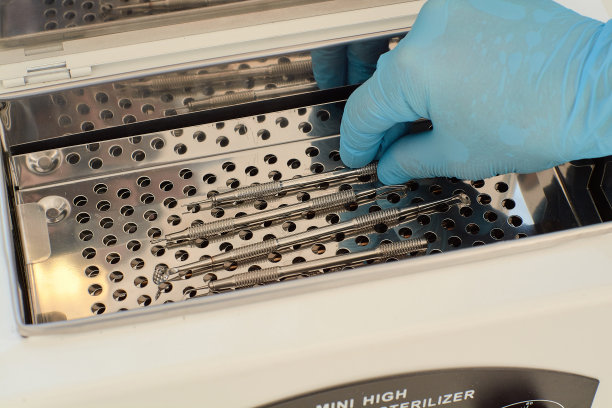Revolutionizing Smiles Exploring the Latest Advances in Dental Implant Treatments and Their Impact on Oral Health
Summary: This article delves into the remarkable advances in dental implant treatments that are reshaping oral health care. We explore the latest technologies and techniques that enhance the overall effectiveness and acceptance of dental implants. Additionally, we discuss the benefits of these innovations, including improved patient outcomes, reduced recovery times, and augmented aesthetics. This comprehensive overview highlights how current trends and research are revolutionizing the smile of individuals worldwide, ensuring that dental implants are not only a restorative solution but also a pathway to better overall health and well-being.
1. Innovations in Dental Implant Technology

The field of dental implants has witnessed an impressive evolution with the advent of cutting-edge technology. 3D imaging and computer-aided design have transformed the planning and placement stages, allowing for precise customization tailored to individual anatomical needs. The integration of these technologies has significantly increased the accuracy of implant placement, minimizing surgical complications and maximizing patient satisfaction.
Moreover, advancements in implant materials are crucial. The development of biocompatible materials, such as titanium and zirconia, enhances the longevity of implants while reducing the risk of which the body may reject. These materials not only improve integration with the jawbone but also provide excellent aesthetic results, making implants an increasingly popular solution for those seeking restorative dental work.
Additionally, innovations in surface technology, such as nano-coatings, have accelerated osseointegration, the process by which implants fuse with the bone. Enhanced surfaces promote quicker healing times and increase the overall success rate of dental implants, fundamentally changing the landscape of dental restoration.
2. Improved Surgical Techniques for Patients
Modern surgical techniques have also revolutionized the dental implant process. Minimally invasive procedures reduce complexity and recovery time, allowing patients to resume their daily lives sooner. Techniques such as flapless surgery, where no gum tissue is lifted, result in less trauma to the surrounding tissues, providing a more comfortable experience for patients.
Another significant development is the use of guided implant placement systems. This approach utilizes digital scans to create precise templates, ensuring that implants are positioned accurately. Such innovations not only enhance surgical outcomes but also reassure patients regarding the safety and efficacy of the procedure.
Furthermore, sedation dentistry has become more accessible, allowing patients to undergo implant surgeries with minimal anxiety. Improved pain management protocols and the ability to provide conscious sedation have made procedures more tolerable, encouraging more individuals to consider dental implants as a viable option for tooth replacement.
3. The Positive Impact on Oral Health
The impact of these advanced dental implant treatments extends beyond aesthetics; they play a crucial role in improving overall oral health. Dental implants prevent bone loss, a common consequence of tooth loss, by stimulating the jawbone through the implants titanium post. This form of stimulation is vital for maintaining bone density and facial structure, significantly enhancing both function and appearance.
Additionally, dental implants improve chewing efficiency compared to traditional dentures. Patients experience enhanced biting forces, allowing them to enjoy a wider variety of foods and ultimately resulting in better nutrition. This advantage is particularly significant for older adults, who may struggle with chewing capabilities due to missing teeth.
Moreover, dental implants contribute to better oral hygiene practices. Unlike dentures, which can trap bacteria and food particles, implants are cared for just like natural teeth, promoting good dental hygiene habits. This ease of maintenance reduces the risk of infection and enhances long-term oral health outcomes, reinforcing the importance of consistent dental care.
4. Enhancing Aesthetics and Patient Confidence
The aesthetic outcomes of modern dental implants resonate profoundly with patients. The availability of customized abutments and crowns allows practitioners to create a natural appearance that blends seamlessly with existing teeth. This attention to detail not only enhances aesthetics but also boosts patients self-esteem and confidence.
Receiving dental implants often transforms patients lives beyond physical appearance. The psychological benefits of restored smiles lead to improved social interactions and a heightened quality of life. Many patients report feeling more inclined to engage socially and express themselves without the inhibitions that missing teeth can cause.
Furthermore, the growing acceptance and success of dental implants have made them a standard solution in restorative dentistry. Patients are becoming increasingly educated about their options, and the positive testimonials surrounding dental implants continue to encourage others to pursue improved oral health through these innovative treatments.
Summary:
In conclusion, the advances in dental implant treatments represent a significant milestone in restorative dentistry, improving technology, surgical techniques, and overall patient outcomes. These innovations not only enhance the aesthetics and functionality of smiles but also contribute to broader oral health benefits, ensuring fewer complications and higher success rates.
A revolution is happening in the way we view dental health, turning dental implants into a reliable solution for many. Embracing these advances can contribute profoundly to an individuals well-being and quality of life.
This article is compiled by Vickong Dental and the content is for reference only.



